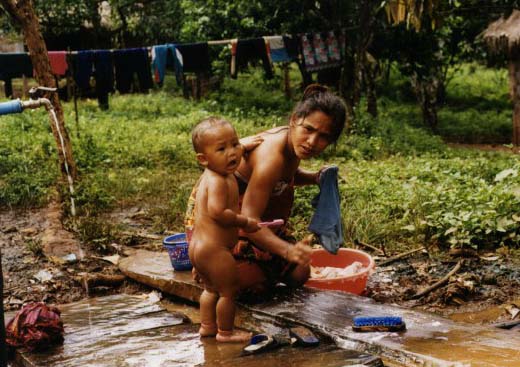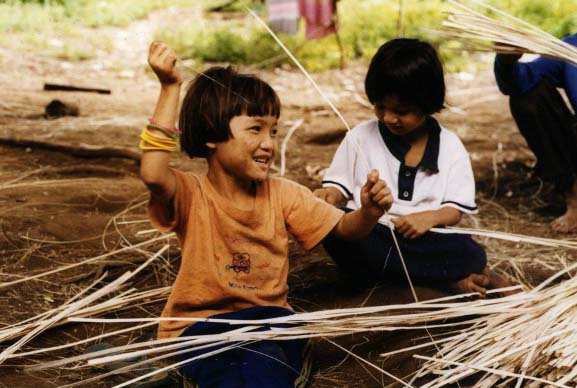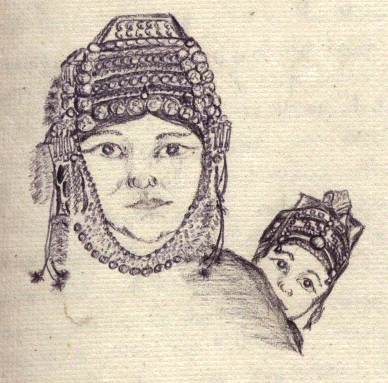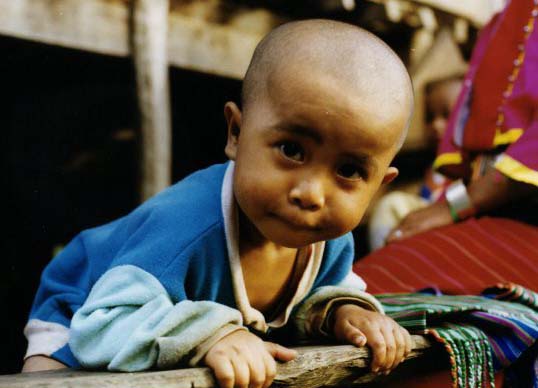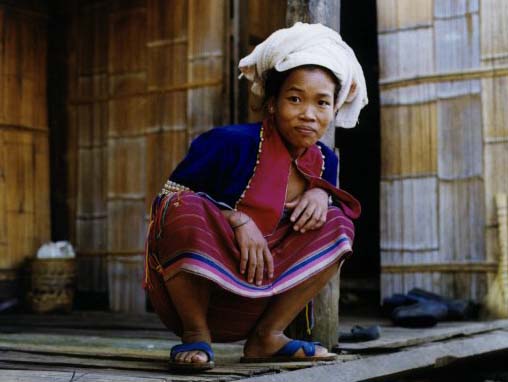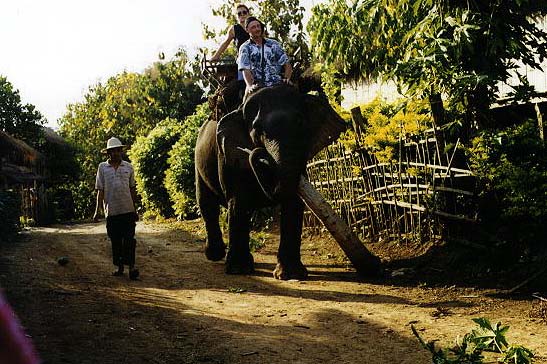
Hilltribe Trek
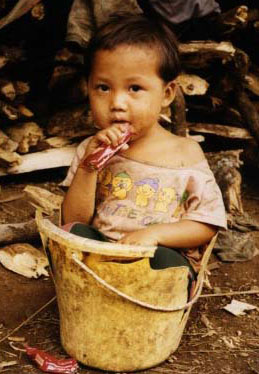 |
| Lisu child sitting in a bucket Want to meet more hilltribe children? Visit The Children of Southeast Asia |
Ready or not, we boarded a songthaew and headed for the hills. Our tour group included a 30-something couple from Hong Kong, an Italian businessman and a 60-year-old British couple. For the next two and a half hours we traveled north, then due east. Our guide, Sam, was born to a Lisu tribe. He came down to the city as a young man to make money. He was pretty funny and extremely energetic. A couple large flying insects landed on the British man, and as Sam picked them off, he joked, "You must have something sweet in your pants."
and headed for the hills. Our tour group included a 30-something couple from Hong Kong, an Italian businessman and a 60-year-old British couple. For the next two and a half hours we traveled north, then due east. Our guide, Sam, was born to a Lisu tribe. He came down to the city as a young man to make money. He was pretty funny and extremely energetic. A couple large flying insects landed on the British man, and as Sam picked them off, he joked, "You must have something sweet in your pants."
The truck dropped us off at the mouth of a dirt path. We walked single file through the red dirt and dense forest. Dogs barked at us from behind the brush. Cows and water buffalo wandered down the path. "The little known jungle cow," I though to myself. What a strange setting for a cow. After thirty minutes, we reached the first village.
Tucked in a misty valley, this peaceful Lahu village consisted of a group of wooden stilt houses clustered around a water pump. Women and children splashed themselves under the running faucet. Three boys tried to ride the same bike. Puppies sat on the deck of a raised hut. A woman sat in a doorway with her infant. Less than forty people lived in the village, maybe even less than thirty. Our tour group gathered under a metal hut across from the village and broke for lunch. Sam passed out fried rice and pineapple slices. A mother dog with swollen nipples stood in the middle of our group hoping for some scraps. The outline of her ribs poked through her skin. I gave her half of my rice, and she gobbled it up in ten seconds flat. After lunch we passed out some chocolate bars that Sam brought along, and took a few snapshots of the children. The villagers there didn't seem disturbed by our cameras, but all the same, I knew we were intruding. We weren't meant to be a part of that scenery.
